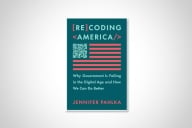You have /5 articles left.
Sign up for a free account or log in.
A colleague here likes to tell the story of the evening student who visited her office in tears. The student had been trying to locate an academic adviser for a while, and at the time, they weren’t easily available in the evenings. (We’ve since changed that.) By my colleague’s telling, the student complained that it wasn’t fair; she had to work during the day, but she still wanted to feel “just like a real college student.” That meant advisers, and faculty, and even student clubs.
This story in IHE about the kids of the upper middle class finding their way to community colleges reminded me of that. It’s old news to those of us on the ground, but still apparently unknown in the larger political discussion. I hope they notice the story before they go and do something stupid.
When the Great Recession enrollment bump hit us in the fall of 2009, we got calls from the local paper looking to write the story that we were retraining huge numbers of displaced workers. It would have made a great story, if it were true. But the major bump in enrollments didn’t come from displaced workers; it came from 18-year-olds who, in flush times, would have gone directly to four-year colleges. Since we’ve come down a bit from the peak, the major drop has been among the 18-year-olds.
Nationally, the political discourse has no room for these developments. Presidents Bush and Obama made references in State of the Union addresses to community colleges as centers of workforce training. The academic blogosphere takes for granted that the liberal arts are under attack everywhere.
But on the ground, that’s not how it looks. Here, the liberal arts are flourishing. Yes, some of that is the effect of classifying certain courses as “gen eds,” but even allowing for that, the transfer major has experienced remarkable growth.
Which makes sense, if you think about it. With student loan debt becoming a major issue, spending the first two years living at home and paying cc tuition makes good economic sense for many students. The humanities and social sciences are hotbeds of innovation on campus, since they have the enrollments and the staffing to do it. (That’s not to deny that we rely entirely too heavily on adjuncts; it’s just to point out that the enrollments are strong.)
The well-intended political leaders who are looking at cc’s as training centers should be careful what they wish for. The vocational programs we run are generally far more expensive to run than the classic liberal arts classes; they require specialized equipment and facilities, for starters, and the class sizes tend to run lower. A dirty little secret of higher ed finance is that certain disciplines – the chalk-and-talk liberal arts classes, mostly – subsidize higher-cost disciplines. All those full-to-the-brim psych classes help pay for the small and expensive nursing clinicals. Take away the psych classes, and the college’s per-student costs will skyrocket. You heard it here first.
American history shows pretty clearly that programs for the poor get punished, while programs for the influential classes become sacred. If community colleges start to serve people who could afford to go elsewhere, that bodes well for their institutional survival.
In that light, the story showing that the scions of the influential classes are finding their way to cc’s actually gives me some hope. Right now, much of the discussion is based on stereotypes, even when the speakers mean well. (Even on the blogosphere, I’ve noticed cc voices remain badly underrepresented. Must be the teaching loads.) But if their own daughters come here -- the sons remain an issue -- it’ll be a little harder to ignore the facts on the ground.
And that will redound to the benefit of all the students here, particularly including the less wealthy ones. If the daughters of privilege start demanding the services that “real” colleges offer, then the single moms who come here will have access to those, too. We won’t have students showing up in tears, asking to be treated like real college students. They’ll finally be treated as the real college students that they actually are.







